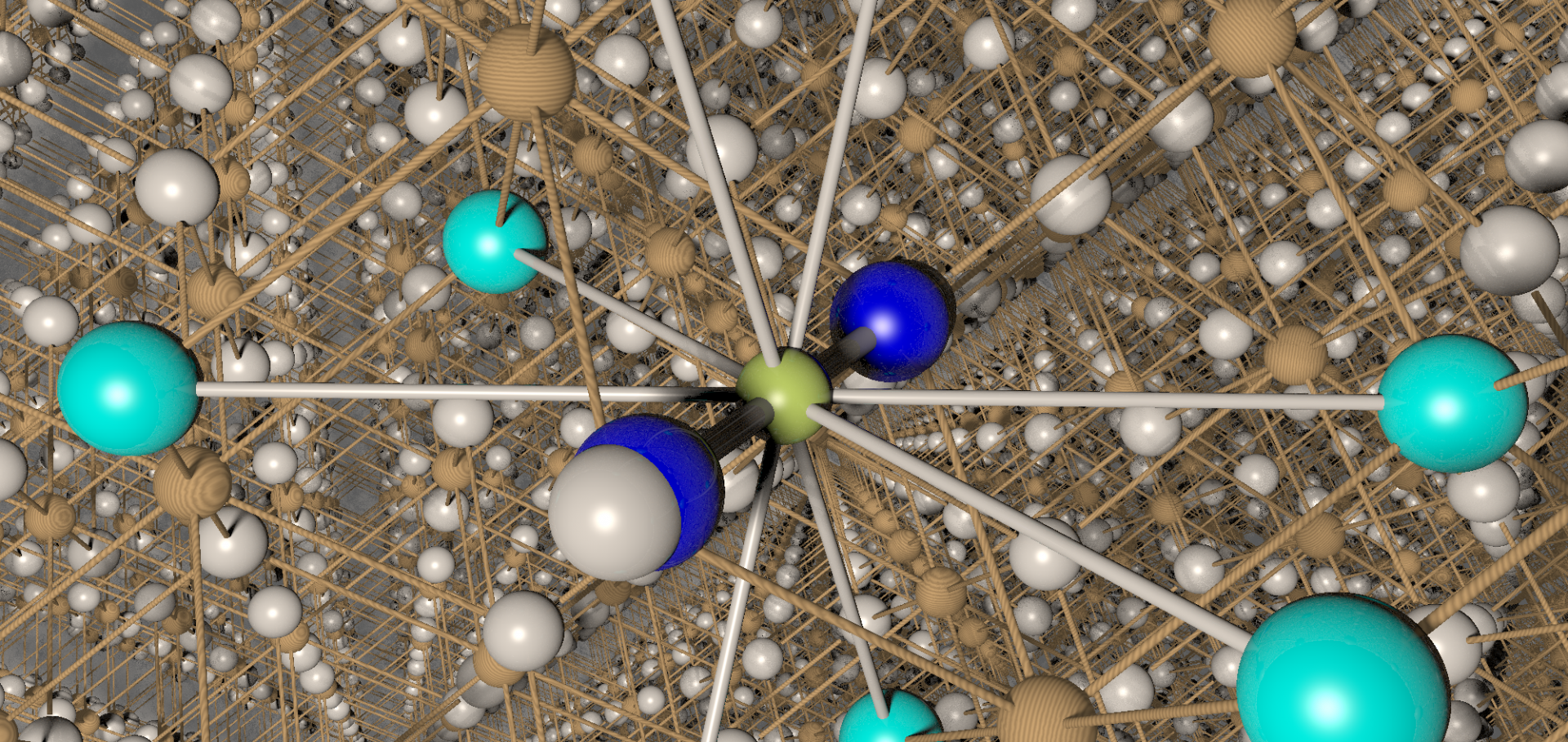Zero field mu SR and QLCR in the molecular metal system (DMe-DCNQI)(2)Cu
HYPERFINE INTERACT 104:1-4 (1997) 357-362
Abstract:
We have carried out implanted positive muon studies on the molecular metal system d(n)(DMe-DCNQI)(2)Cu in order to understand better its novel magnetic properties. Examples of these salts at different levels of deuteration were studied. The fully deuterated (d(8)) salt shows a metal-insulator (MI) transition around 80 K and a magnetic transition around 7 K. The muon spin relaxation rate is enhanced below the MI transition, reflecting the localisation of spins along the Cu columns, however, the increase in muon spin relaxation rate occurs well above the metal-insulator (MI) transition and suggests a slowdown of the spin fluctuations around 120 K. At temperatures below 7 K a zero field precession signal was observed as a result of the 3D magnetic ordering of the Cu spins. For a muon site associated with the ring of the DCNQI molecule, the local field distribution was found to be consistent with the previously proposed magnetic structure. A sharp nuclear quadrupolar level crossing resonance (QLCR) was observed at 50 G which was assigned to resonance with the imine nitrogen on the DCNQI molecule.The low-temperature phase of α-(BEDT-TTF)2 KHg(SCN)4 : I. Angle and temperature dependence of the Shubnikov-de Haas and de Haas-van Alphen oscillations
Journal of Physics Condensed Matter 8:49 (1996) 10361-10376
Abstract:
The magnetoresistance and magnetization of single crystals of the organic charge-transfer salt α-(BEDT-TTF)2KHg(SCN)4 (where BEDT-TTF is bis(ethylenedithio)tetrathiafulvalene) have been studied in fields of up to 30 T and at temperatures as low as 20 mK. Five separate series of quantum oscillations have been observed in the low-temperature, low-field phase of this material and have been studied as a function of tilt angle of the field. It is proposed that two of these frequencies are the result of Stark quantum interference while the others are Shubnikov-de Haas (SdH) and de Haas-van Alphen (dHvA) oscillations due to closed Fermi surface pockets or conventional magnetic breakdown. The unconventional temperature dependence observed for some of these oscillations and the applicability of current models of the Fermi surface of α-(BEDT-TTF)2KHg(SCN)4 are discussed.The low-temperature phase of α-(BEDT-TTF)2KHg(SCN)4: II. Pressure dependence of the Shubnikov-de Haas oscillations
Journal of Physics Condensed Matter 8:49 (1996) 10377-10392
Abstract:
The magnetoresistance of α-(BEDT-TTF)Magnetooptical microwave spectroscopy of the coherent magnetic state in the mixed valence compound SmB6 in the frequency range 40-120 GHz
JETP Letters 64:10 (1996) 760-766
Abstract:
In undoped pure single crystals of the mixed valence compound SmB6 anomalous ESR absorption is observed in the frequency range v=40-120 GHz at temperatures of 1.8-4.2 K. The ESR for the case of the coherent ground state consists of two components corresponding to g-factors g1=1.907±0.003 and g2=1.890±0.003. The amplitude of both ESR lines strongly depends on temperature in the temperature range studied: the amplitude of the first line with g=gt increases and the amplitude of the second line decreases with temperature. A model based on consideration of intrinsic defects in the SmB6 crystalline lattice, with a density ∼1015-1016 cm-3, is suggested as an explanation for the anomalous ESR-behavior. In the frequency range v>70 GHz at T=4.2 K, in addition to the main ESR lines, a new magnetic resonance with a hysteretic field dependence is discovered. © 1996 American Institute of Physics.Phase boundary in the dimensionality of angle-dependent magnetoresistance oscillations in the charge-transfer salt α-(BEDT-TTF)2 KHg(SCN)4
Journal of Physics Condensed Matter 8:45 (1996) 8829-8845


